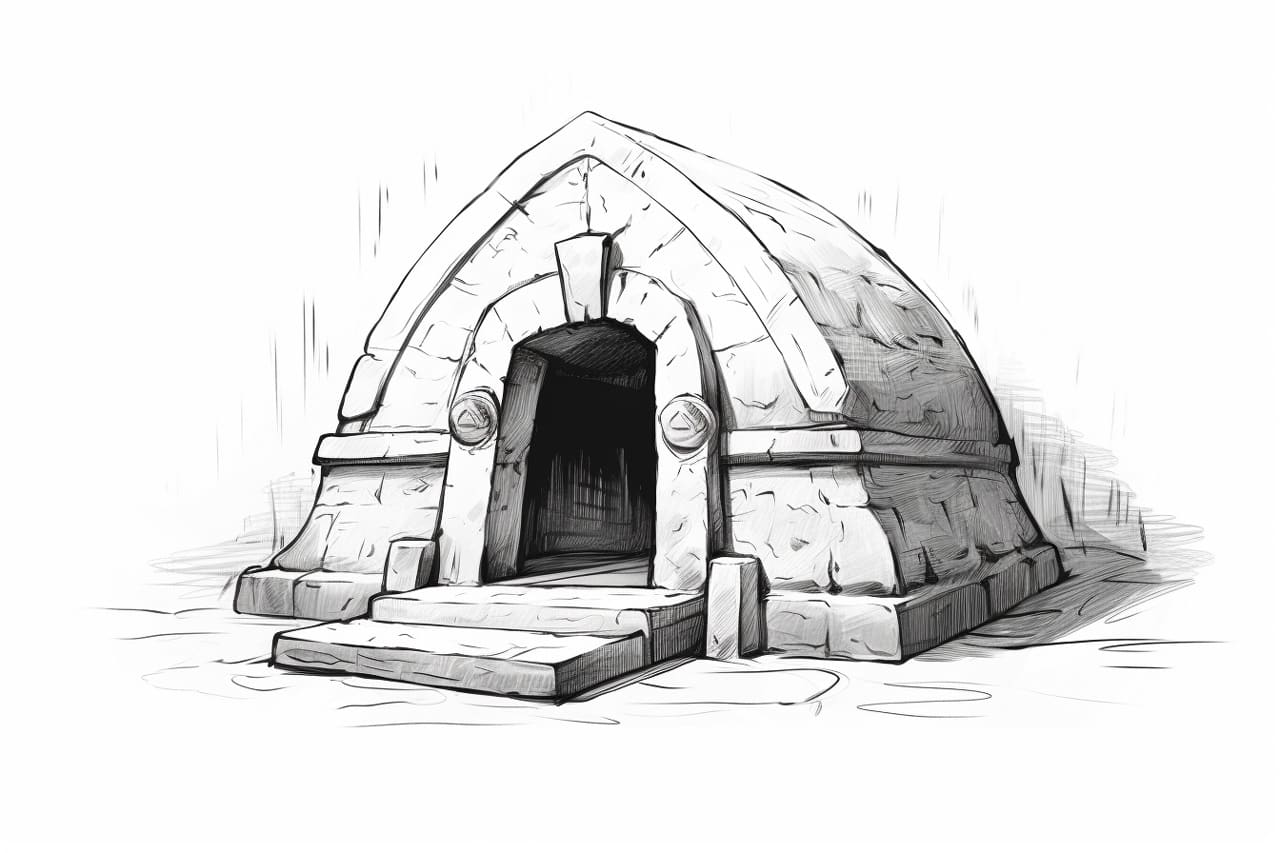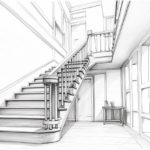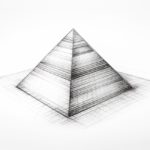Welcome to the intriguing world of how to draw a tomb! Tomb art has a rich history that dates back centuries, showcasing these ancient structures’ beauty, mystery, and significance. From the intricate carvings and detailed inscriptions to the hauntingly beautiful architecture, tombs have long captivated artists and art enthusiasts alike. In this guide, we will explore the techniques and skills needed to capture the essence and allure of tombs through drawing. So, grab your sketchbook and pencils, and let’s embark on a creative journey through the fascinating realm of tomb art!
Materials Required
To draw a tomb, you will need the following materials:
- Drawing paper or sketchbook
- Pencils (various grades for shading and detailing)
- Eraser
- Ruler (for straight lines)
- Drawing pens (for outlining and adding details)
- Reference images of tombs for inspiration and accuracy
Optional materials:
- Charcoal or graphite sticks for shading
- Blending stumps or tortillons for blending
- Colored pencils or markers for adding color
- Drawing board or easel for support and comfort while drawing
These materials will help you create a detailed and realistic tomb drawing.:
How to Draw a Tomb: a Step-by-step Guide
Step 1: Gather Your Materials
- Gather your drawing materials, including paper, pencils (varying in hardness for shading), eraser, ruler, and any other tools you prefer.
Step 2: Plan the Composition
- Decide on the size and placement of the tomb on your paper.
- Sketch a rough outline of the tomb’s shape and position within your drawing space.
Step 3: Draw the Basic Shape of the Tomb
- Using your ruler to ensure straight lines, lightly sketch the basic shape of the tomb, considering its height, width, and depth.
Step 4: Add Details to the Tomb
- Start adding details to the tomb, such as the entrance, windows, columns, and any decorative elements it may have.
- Pay attention to symmetry and proportions to maintain a realistic look.
Step 5: Refine the Details and Texture
- Add intricate details like carvings, inscriptions, or textures to the tomb’s surfaces.
- Use varying pencil pressures and shading techniques to create depth and dimension.
Step 6: Shade and Add Shadows
- Determine the direction of your light source and start shading the tomb accordingly.
- Add shadows under the tomb and other objects nearby to ground it in the scene.
Step 7: Final Touches and Refinements
- Clean up any stray lines or smudges with an eraser.
- Add final touches to enhance the overall look of the tomb, such as highlights to certain areas or additional shading for depth.
Step 8: Evaluate and Adjust
- Evaluate your drawing to see if any areas need further refinement or adjustments.
- Make any necessary tweaks to achieve the desired result.
Step 9: Sign and Date Your Artwork
- Once you are satisfied with your drawing of the tomb, sign it with your name and date to mark its completion.
Step 10: Share and Seek Feedback
- Share your artwork with others to get feedback and suggestions for improvement.
- Use the feedback to enhance your skills and grow as an artist.
Conclusion
Great job on your drawing of the Tomb! Your work demonstrates a strong understanding of form, light, and shadow. Keep exploring different subjects and techniques to continue growing as an artist. Remember always to stay curious, keep practicing, and trust in your creative process. Your dedication and passion for art will undoubtedly lead to even more impressive creations in the future. Keep up the fantastic work!
Fun Facts About Tombs
- Tombs have been used by civilizations throughout history to honor and remember their deceased loved ones.
- Many ancient tombs were filled with valuable treasures and artifacts to accompany the deceased into the afterlife.
- Some famous tombs, such as the Pyramids of Egypt or the Mausoleum at Halicarnassus, are considered architectural marvels due to their size and complexity.
- Tombs can provide valuable insights into the culture, beliefs, and practices of the people who built them.
- Some tombs have elaborate decorations and inscriptions that tell stories about the deceased’s life or depict scenes from mythology.
- Tombs are often associated with rituals and ceremonies, such as burial rites or offerings to honor the dead.
- Many tombs are designed to be impressive structures, reflecting the importance and status of the person buried within.
- Some tombs have mysterious or supernatural legends attached to them, adding to their intrigue and allure.
- Archaeologists and historians continue to study tombs to learn more about the past and unlock the secrets of ancient civilizations.
- Tombs are a reminder of the universal human experience of mortality and how different cultures have sought to commemorate and remember their dead.
Suggestions for Scenes and Settings for Tomb Drawings
Certainly! Here are some specific suggestions for scenes and settings you can consider for drawing a tomb:
- Ancient Egyptian Tomb: Include hieroglyphics, sarcophagi, and Egyptian artifacts to create an atmospheric scene.
- Gothic Tomb: Focus on intricate stone carvings, arches, and dramatic lighting to capture a gothic tomb’s mysterious and eerie vibe.
- Viking Burial Mound: Depict a rugged landscape with a burial mound surrounded by Viking ships, weapons, and runes.
- Chinese Tomb: Show a terracotta army, traditional Chinese architecture, and intricate designs to bring a Chinese tomb to life.
- Catacombs: Explore the underground tunnels filled with skulls, bones, and dimly lit passageways to create a haunting scene.
- Pirate’s Buried Treasure: Illustrate a tropical island with a hidden tomb containing buried treasure, maps, and pirate paraphernalia.
- Mausoleum: Draw a grand mausoleum with ornate architecture, statues, and lush gardens to convey a sense of grandeur and solemnity.
- Modern Cemetery: Capture a contemporary cemetery with gravestones, flowers, and a peaceful setting to evoke a sense of tranquility and remembrance.
These suggestions can help you create diverse and engaging drawings of tombs based on different historical and cultural contexts.









